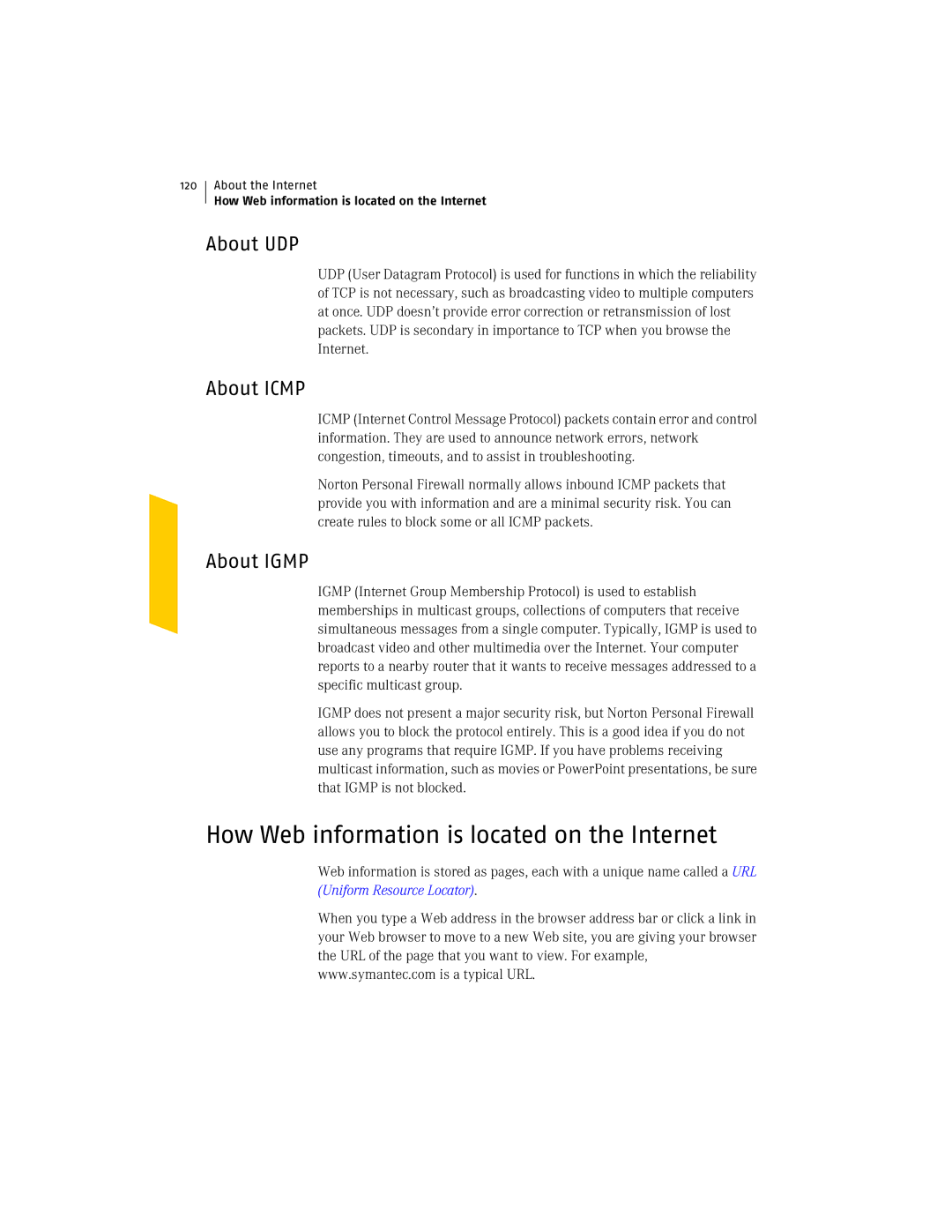120
About the Internet
How Web information is located on the Internet
About UDP
UDP (User Datagram Protocol) is used for functions in which the reliability of TCP is not necessary, such as broadcasting video to multiple computers at once. UDP doesn’t provide error correction or retransmission of lost packets. UDP is secondary in importance to TCP when you browse the Internet.
About ICMP
ICMP (Internet Control Message Protocol) packets contain error and control information. They are used to announce network errors, network congestion, timeouts, and to assist in troubleshooting.
Norton Personal Firewall normally allows inbound ICMP packets that provide you with information and are a minimal security risk. You can create rules to block some or all ICMP packets.
About IGMP
IGMP (Internet Group Membership Protocol) is used to establish memberships in multicast groups, collections of computers that receive simultaneous messages from a single computer. Typically, IGMP is used to broadcast video and other multimedia over the Internet. Your computer reports to a nearby router that it wants to receive messages addressed to a specific multicast group.
IGMP does not present a major security risk, but Norton Personal Firewall allows you to block the protocol entirely. This is a good idea if you do not use any programs that require IGMP. If you have problems receiving multicast information, such as movies or PowerPoint presentations, be sure that IGMP is not blocked.
How Web information is located on the Internet
Web information is stored as pages, each with a unique name called a URL (Uniform Resource Locator).
When you type a Web address in the browser address bar or click a link in your Web browser to move to a new Web site, you are giving your browser the URL of the page that you want to view. For example, www.symantec.com is a typical URL.
